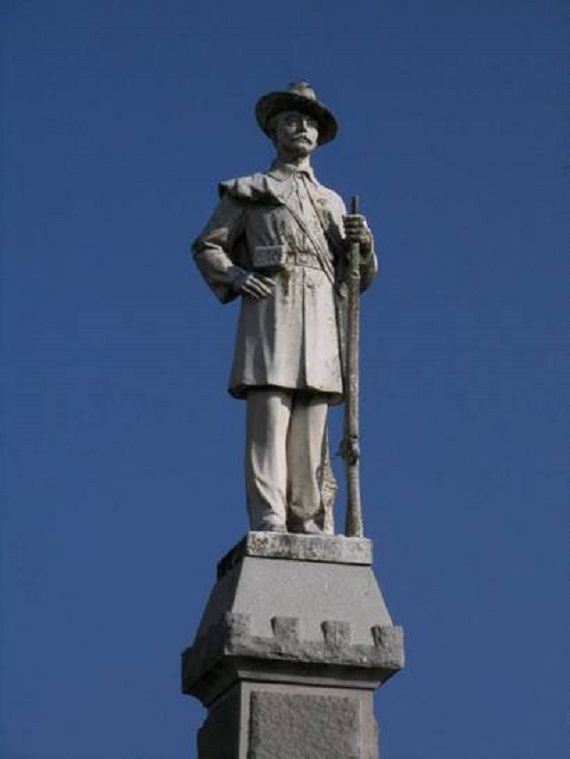In 1958 a nearly forgotten thirty-four year old Texas author named William Humphrey debuted his first novel, Home From the Hill, to widespread praise. Legendary director Vincente Minnelli released a film version only two years later. Both the book and the movie are highly rated by Amazon customers. The novel begins as follows:
Early one morning last September the men squatting on the Northeast corner of the town square looked up from their whittling to see…under the shadow of the Confederate monument, a dirty long black hearse with a Dallas County license plate.
Thus, the curious reader is prompted to continue in order to learn the identity of the deceased who was returning from a distant big city to a place where the memory of the Confederate soldier remained central to the culture. It’s a fine novel and fascinating movie. In a later novel Humphrey wrote:
If the Civil War is more alive to the Southerner than the Northerner it is because all of the past is, and this is so because the Southerner has a sense of having been present there himself in the person of one or more of his ancestors. The war filled merely one chapter in his…[family history]…transmitted orally from father to son [as] the proverbs, prophecies, legends, laws, traditions-of-origin and tales-of-wanderings of his own tribe….It is this feeling of identity with the dead (who are past) which characterizes and explains the Southerner.
It is with kin, not causes, that the Southerner is linked. Confederate Great-grandfather…is not remembered for his (probably undistinguished) part in the Battle of Bull Run; rather Bull Run is remembered because Great-grandfather was there. For the Southerner the Civil War is in the family.
Clannishness was, and is, the key to his temperament, and he went off to war to protect not Alabama but only those thirty or forty acres of its sandy hillside, or stiff red clay, which he broke his back tilling and which was as big a country as his mind could hold.
About twenty years after the war a foppish stranger stepped off the Dallas-bound train when it stopped at Clarksville. Even though he spoke English none of the whittlers at the station could understand him, which they later learned was due to his Italian accent. But eventually the stranger—who identified himself as a professor—was granted an audience with the aldermen during which he explained that he could build a marble monument to the Confederate infantryman for $5,000. For $25,000 he could erect one depicting a mounted cavalryman, or officer.
The town chose the $5,000 option. After the professor labored creatively and submitted a finished design the aldermen gave him a $2,500 deposit. A year later he returned with the sculpted components and erected the statue. The unveiling was a celebration that attracted nearly everyone in town, white and black.
A good many years elapsed before anyone from Clarksville traveled far along the railroad from whence the sculptor arrived. But when one resident eventually travelled to Georgia he noticed that there was “hardly a town of monument-aspiration size along the railway line all the way to Atlanta without a copy of our soldier.”







